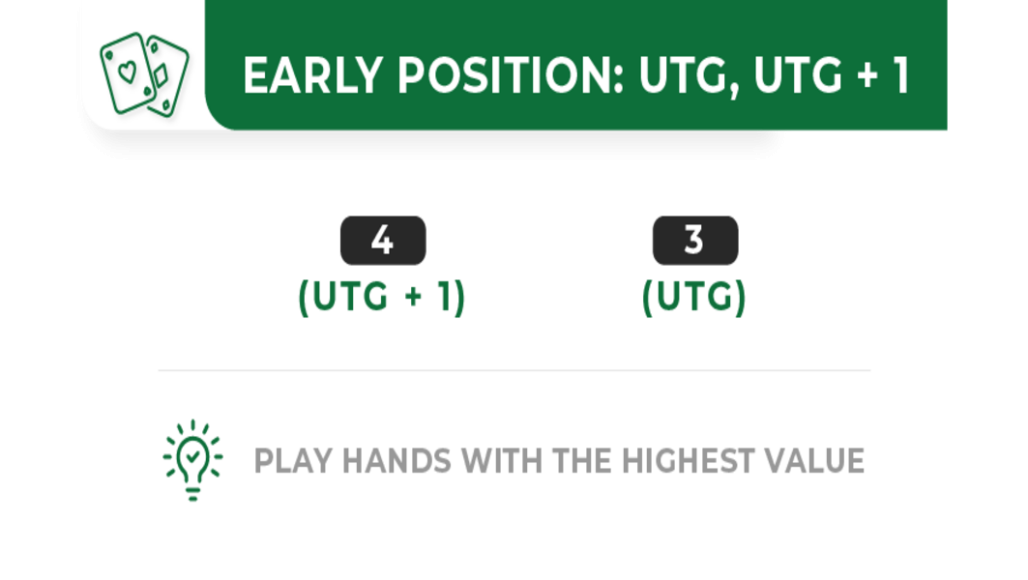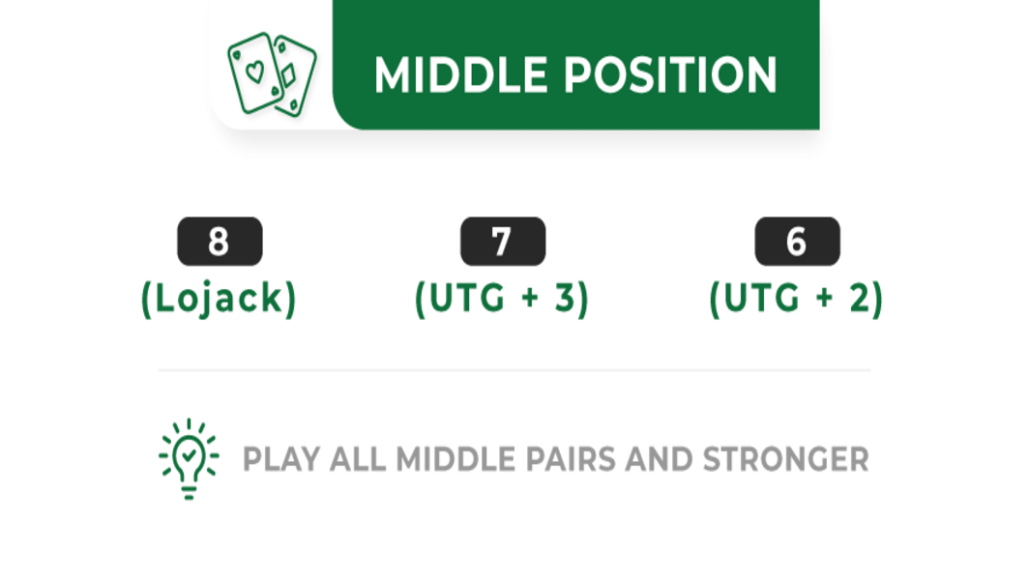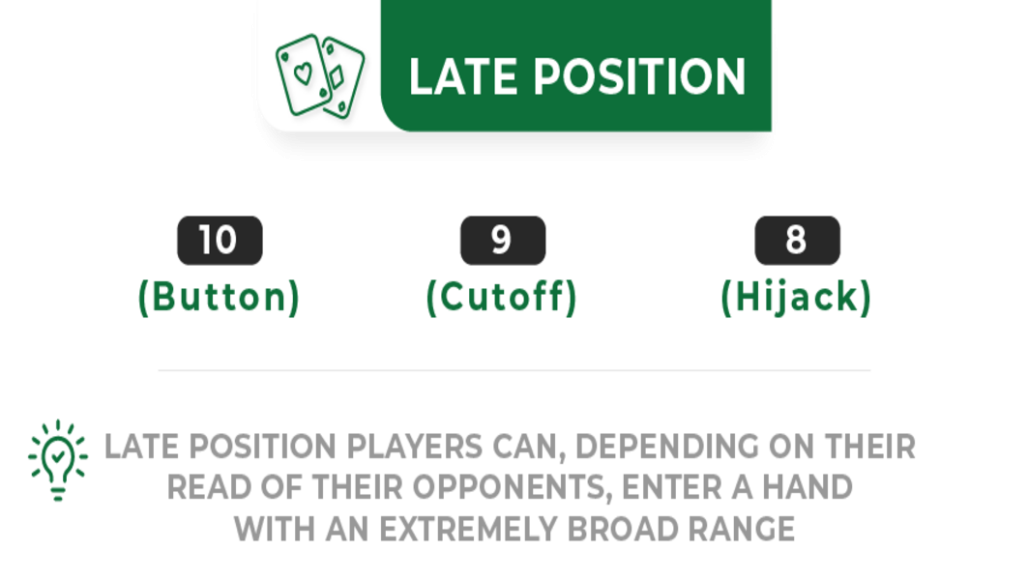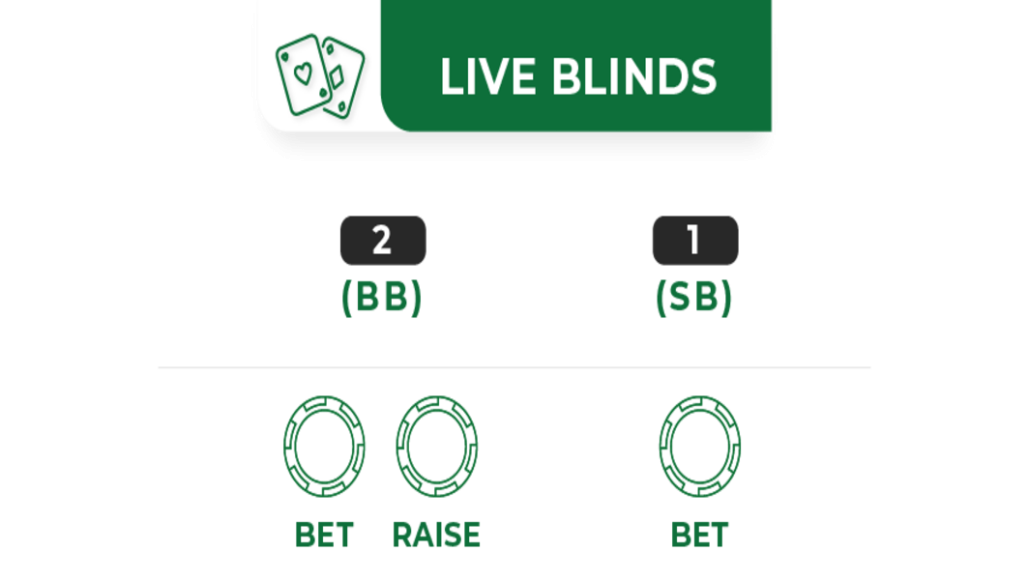All Poker Positions: Mastering Every Step

Understanding the intricacies of poker positions can be the difference between winning big and busting out early. This comprehensive review will delve into poker positions explained, their strategic importance, and how to leverage each one to maximize your winning potential. Whether you’re a novice or an experienced player, mastering all poker positions is crucial for success.
The Basics of Poker Positions
In poker, the position refers to where a player sits in relation to the dealer. There are generally three primary categories of positions: early, middle, and late. Each category encompasses specific seats at the table and has distinct strategic implications. In this article, you’ll find poker positions explained in detail.
Early Position (EP)
Early position includes the seats immediately to the left of the big blind: Under the Gun (UTG), UTG+1, and sometimes UTG+2. These seats are considered the weakest positions because players in EP must act first without knowing how their opponents will play.
Strategic Considerations:
- Hand Selection: In early position, it’s crucial to play only the strongest hands. Premium hands like pocket aces, kings, queens, and ace-king suited are recommended.
- Caution: Because of the limited information, players should avoid bluffing from this position and focus on solid, conservative play.
- Risk: Acting first means a higher risk of being outplayed by opponents in later positions who have more information.

Middle Position (MP)
Middle position seats are the next three seats to the left of the early position players. These seats strike a balance between the early and late positions. A notable seat in this category is the lojack position poker, which is pivotal for strategic play.
Strategic Considerations:
- Broader Range: Players in middle position can afford to play a slightly wider range of hands compared to early position. This can include medium pairs, suited connectors, and high suited cards.
- Opportunistic Play: With more players yet to act, middle position players can employ more tactical moves such as semi-bluffs and strategic betting.
- Adjustability: Players can adjust their strategy based on the actions of early position players and the tendencies of those in late position.

Late Position (LP)
Late position is comprised of the cutoff poker position (CO) and the Button (BTN), which are considered the most advantageous seats at the table. The Button is especially powerful as it is the last to act in all post-flop betting rounds.
Strategic Considerations:
- Aggression: Players in late position can be more aggressive due to the wealth of information available from previous players’ actions.
- Bluffing: Late position is the best place for executing bluffs and stealing blinds.
- Versatility: Players can exploit their position to play a wide range of hands, including speculative ones like suited connectors and low pairs.

The Blinds: Small Blind (SB) and Big Blind (BB)
The blinds are forced bets and occupy unique positions. The small blind is directly to the left of the dealer, and the big blind is to the left of the small blind.
Strategic Considerations:
- Defensive Play: Blinds often require defensive strategies due to their mandatory initial investment. Players should defend their blinds with a wide range of hands, particularly against late position steals.
- Post-Flop Play: Playing from the blinds demands strong post-flop skills because these players are out of position for the rest of the hand.
- Stealing Back: Occasionally, blinds can retaliate by re-raising or “stealing back” from late position players who frequently attempt to steal blinds.

Position-Specific Strategies
Early Position Strategy
Playing from early position demands caution and discipline. Stick to premium hands and avoid marginal ones that can lead to difficult decisions later in the hand. Avoid complex bluffs and focus on value betting strong hands.
Middle Position Strategy
In middle position, players should start opening up their range slightly. This is an excellent spot to play medium-strength hands and suited connectors. Pay close attention to the actions of players in late position, as they will often dictate your moves. The lojack position poker is a key middle position seat, requiring a balanced approach of aggression and caution.
Late Position Strategy
Late position is where skilled players can truly shine. Use your positional advantage to steal blinds, bluff, and apply pressure on opponents. Expand your hand range significantly and use aggressive betting to exploit the information you have gathered. The cutoff poker position is particularly powerful for making strategic plays just before the Button.
Blind Strategy
In the blinds, the key is to defend wisely. Don’t let late position players steal your blinds without a fight. Develop a balanced defending range to prevent opponents from exploiting you. Post-flop play from the blinds is challenging but crucial; focus on reading the board and your opponents accurately.
Conclusion
Mastering all poker positions is fundamental to becoming a successful player. Each position offers unique opportunities and challenges, impacting your overall game strategy significantly. Early positions require tight, cautious play due to their disadvantage. Middle positions allow for more flexibility and opportunistic moves, balancing caution with aggression. Late positions are prime for aggression and exploiting information gained from other players’ actions. The blinds demand robust defense and strong post-flop skills, as they are forced bets with positional disadvantages.
In Short Deck Poker, mastering positions is even more critical due to the altered hand rankings and probabilities. Understanding how rake works in poker is also essential, as higher rake reduces profitability and requires tighter, more selective play.
So by internalizing the strategic nuances of each position and applying them effectively, you can elevate your poker game to new heights. Remember, in poker, knowledge is power, and understanding poker positions is one of the most potent weapons in your arsenal.
FAQ
Poker positions are crucial because they determine the order of play. Acting later in a hand provides more information about opponents’ actions, allowing for better strategic decisions. Understanding your position helps you make informed choices about which hands to play and how to play them.
Early positions include the seats immediately to the left of the big blind: Under the Gun (UTG), UTG+1, and sometimes UTG+2. These positions are challenging because players must act first without knowing how their opponents will play.
The cutoff poker position is the seat immediately to the right of the Button. It is one of the most powerful positions because it allows players to act just before the Button, often giving them the opportunity to steal blinds and apply pressure on opponents.
The blinds consist of the Small Blind (SB) and the Big Blind (BB). These are forced bets that players must make before seeing their cards. The Small Blind is directly to the left of the dealer, and the Big Blind is to the left of the Small Blind. Players in the blinds must act first in post-flop betting rounds, making their position challenging.
From early positions, focus on playing only the strongest hands. Because you act first, you have the least information about your opponents’ intentions. Avoid bluffing and stick to premium hands like pocket aces, kings, queens, and ace-king suited.
The Button is generally considered the best position in poker. Acting last in all post-flop betting rounds gives the player the most information about their opponents’ actions, allowing for more informed and strategic decisions.
To improve your understanding of poker positions, study the strategic implications of each seat at the table, practice playing from different positions, and pay attention to how professional players handle their positions. Consistent practice and analysis will help you master all poker positions and enhance your overall game strategy.